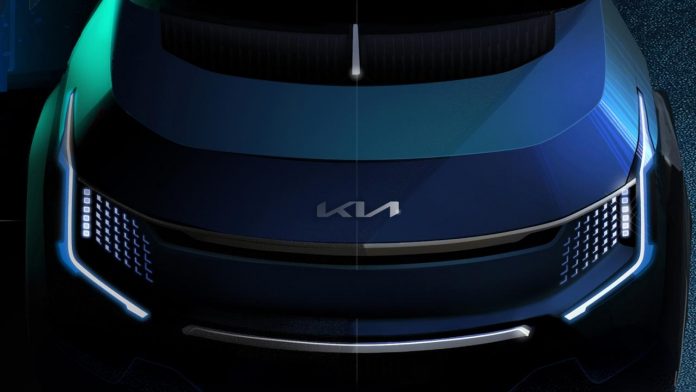The popular brand is ready to unveil the successor to its headline-grabbing new car. And it’s just the beginning of the brand’s revolution.
Kia has revealed its next big thing.
The South Korean brand presented its second all-electric, next-generation vehicle concept ahead of the Los Angeles Motor Show next week.
The large SUV, named EV9, will follow the smaller EV6, which is slated to hit the local market in 2022.
According to Kia, it will build on the brand’s new scalable electrical platform that it will share with the upcoming EV6 and the recently launched Ioniq 5.
This means that it is suitable for multiple engines with all-wheel drive and 800 V charging technology, which enables ultra-fast charging of up to 350 kW or about 100 km range in five minutes.
The EV9 concept offers a preview of more conventional, chunky SUV styling compared to the bold, sporty look of the EV6.
The inside of Kia’s show car shows a preview of a giant screen that covers two-thirds of the dashboard.
The EV9 concept is expected to be shown in series form over the next year, where it will be the second electric model under Kia to have seven zero-emission vehicles by 2027.
Kia’s electric vehicles are likely to get expensive. The smaller EV6 could exceed $ 100,000.
Australian prices for the model have not been disclosed. But we know it costs £ 40,945 to £ 51,945 ($ 76,250 to $ 97,000) in the UK with no optional extras.
Australia is lagging behind other industrialized nations in introducing electric vehicles and has few incentives to counter the high prices and lack of infrastructure.
The Morrison administration’s recent EV policy has been badly received because it has done little to make electric cars more affordable.
Investing in infrastructure helps reduce range anxiety, one of the biggest hurdles for electric cars.
The government has not put in place an emissions reduction target, which gives automakers no incentive to bring their vehicles to Australia.
Volkswagen, which brings some of the best and cheapest electric cars to the market, is prioritizing its vehicles for countries with emissions targets.
This means that Australians are unlikely to get these high quality, cheaper machines for some time.
Kia also announced that it will cease sales of gasoline and diesel models in Europe by 2035 and in other major world markets by 2040.
The company has also pledged to be carbon neutral by 2045.
Hosung Song, CEO of Kia, said, “For us, it’s not just about setting goals and achieving goals. It’s about setting a vision that inspires others to join the movement to help humanity and protect the environment. “
According to Kia, most of the CO2 emissions generated by any mass vehicle manufacturer come from when the vehicle is in daily use and on the road.
The manufacturer is also researching “green steel” to reduce the company’s emissions as the steel industry is one of the world’s largest polluters.
Kia will also invest in “blue carbon”, the storage of carbon in marine ecosystems such as algae and the Wadden Sea.

